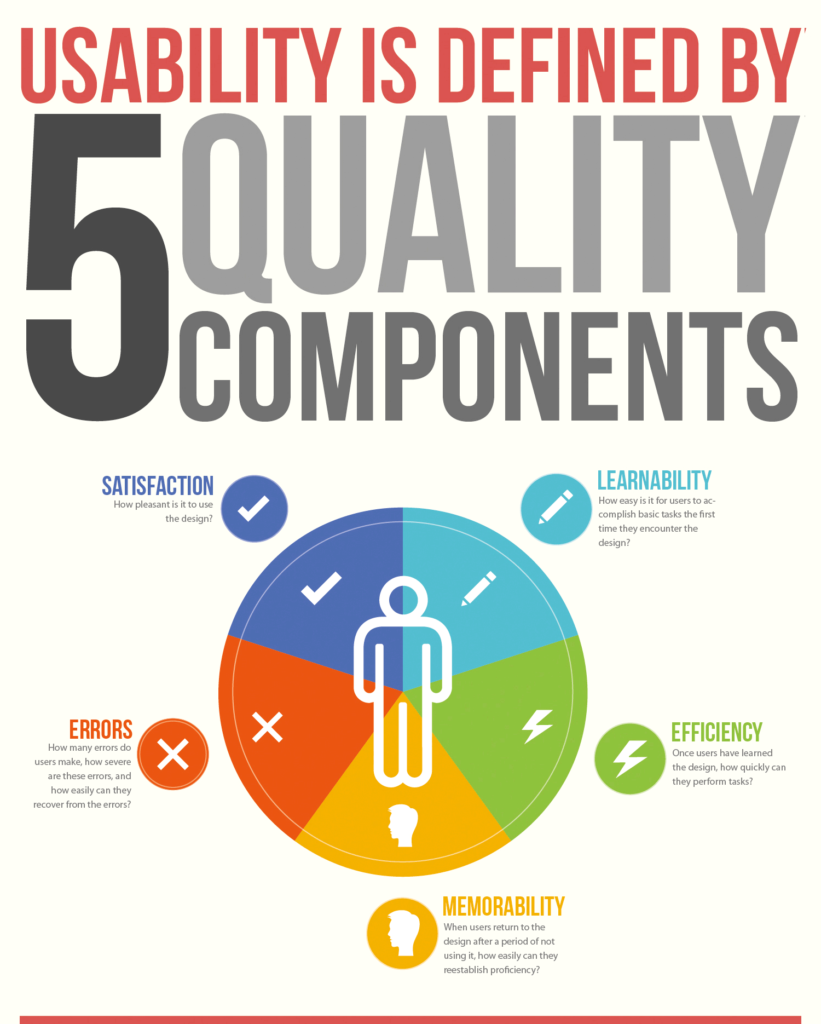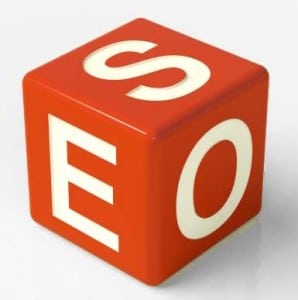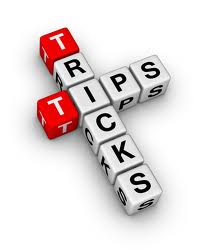Having a website with terrible on-page optimization is like inviting guests to a dinner and not having the food ready! It is not just the online users that are repelled by faulty on-page SEO. In fact, more than the users, it is the search engine algorithms and crawlers that find it difficult to index your website.
Cheat Sheet for Top On-Page SEO Tricks
Basic SEO
- Focus keyword in SEO title tag
- Focus keyword in meta description
- focus keyword in URL
- Focus keyword appears in first 10% of the content
- Focus keyword appears in the content.
- Content length must be more than 1500 words.
Advanced SEO
- Focus keyword in sub headings
- Focus keyword in image alt tag
- Keyword density in between 0.6%-1%
- URL length must be within 75 characters
- 3-4 outbound links should be there in content
- Internal linking must be there.
- Focus keyword must be unique to the page and must not be used before. So focus on topical content. Do not write repetitive articles.
Title Readibility
- Focus keyword must be used at beginning of SEO title
- SEO title must have a positive or negative sentiment.
- SEO title should contain power words.
- Use a number in SEO title.
Content Readibility
- Use a table of content
- Use short paragraphs
- Put images and videos in your content (Hybrid content)
Top SEO Tricks
You miss out on important SEO juice by not propping up your SEO efforts with smart on-page optimization. Here are the top 5 ways in which you can do a better job of your on-page SEO work:
Intros
Cut down the use of Java and Flash intros to your website. They often block the entry of the search engine crawlers to your website. It’s like keeping your doors locked when you are expecting guests. Such intros may make your website look better in terms of design and outlook, but seriously damage your website’s accessibility.
Addresses
Have a clear convention on naming URL addresses for your various web pages in the website. Be consistent rather than random and use key phrases or terms in the URL. To distinguish between two words in the URL, use hyphens. There must be some inherent logic between the sections and subsections that make up your website in the context of URL creation. Example: sencogold.com/product/pendants/gold-ganesha-pendant/
Keyword Cannibalism
Guard against your own internal web pages competing against each other for search engine rankings. Optimize each web page in its unique way, preferably with different keywords. This will ensure that your web pages find the status of individual websites in the eyes of search engine crawlers. They will individually combine to get you higher online traffic.
Title Tags
Title tags and meta descriptions are necessary for the unique identity of a web page within a website. Following the point on Cannibalism, you have to write unique titles and meta descriptions for each web page so that the search engine crawlers know that they exist as unique web pages. Use power words with your title tag. Read more about title tags mistakes to avoid & how to write killer title tags
Robot Guides
Make use of robot.txt files to guide search engine crawlers towards web pages that you want them to crawl before others. You can do that by prioritizing your web pages according to your requirement. It is like a guided tour through your property: you get to pick the rooms you want to show off first!
Site architecture, navigation & Usability
Simple navigation, clean inter-linked site architecture with long form content in landing pages / cornerstone pages and sub pages & very good usability of the website. Find below what’s called uability.

Interlinking of Web Pages Helps SEO
Interlinking of Web Pages Helps SEO. Create interlinks between the web pages through navigation links, anchor texts, breadcrumbs.

There is more to a website than the Home page and the Services page. SEO services often concentrate wholeheartedly on these two web pages. They optimize the back-ends of these pages with the best keywords. The entire SEO campaign is focused on getting visitors to these pages. As a result, the other web pages lose out on traffic. From a smart search engine optimization perspective, this is like putting too many apples in the same basket. If the pages do not make the kind of impact it is expected to, the SEO efforts look lackluster.
Interlinking of web pages helps to pan out the online traffic over the whole website. You can create interlinks between the web pages through navigation links in the form of anchor texts, breadcrumbs that you find on the top of each web page to help the online visitor find out his position on the website instantly, subject area web links and the individual web page links. With the help of these links, an SEO initiative can ensure that the online traffic is being spread out over all the web pages. You can never say for sure which web page can convert a potential lead into a sale.
Related reading – Contextual Link Building Service – A Successful SEO Strategy
The use of interlinking among the internal web pages also helps SEO efforts. Search engines prefer a web page that is well-connected with others internally or externally. The crawlers of search engines like to rank such well-linked pages favorably in SERP results. From a non-technical point of view as well, interlinking is crucial for the success of an SEO campaign. Your website will not benefit by allowing the online visitor to stagnate to the two pages that form the crux of the SEO team’s efforts. The visitor has to be navigated to other pages on the website as well. Interlinking takes care of that.
SEO – Enjoy the Numero Uno Position
The radical shift from traditional media of marketing to Internet marketing has left many bewildered regarding interaction with potential customers. With competition getting fiercer with every passing day, a company’s website has become a way of presenting itself to the world.
All top most companies today take help of search engine marketing tools so that they can get a better ranking in the major search engines like Google, Yahoo and MSN. In fact, it is crucial for a website to remain in the top 10 positions because viewers hardly go beyond the first page. And SEO helps you in bringing your site closer to your prospects.
What exactly do we mean when we say Search Engine Optimization?
SEO is the process of developing and analyzing individual web pages and the entire website so that they get a good ranking in the major search engines. It helps to create a website in such a way that it can be easily read by the search engine crawler.
Onpage optimization is the first step of SEO. It refers to what can be done on the pages of a website for getting a better ranking. It includes the following processes:
Title Optimization –
A site’s title tag is a crucial element. It is the first thing that search engines show and provides a glimpse of the website content. A title tag has dual purposes to fulfill. It must be eye-catching so that the searcher feels tempted to know more about the site. At the same time, it must be informative enough so that the search engine ranks it above thousands of other similar websites.
An ideal title tag should include name of the business. Including right kind of keywords is important – e.g., a pizza company can get good responses if it includes keywords like order pizza, home delivery pizza etc in the title tag. It is evident that people will be typing these words when they want to order pizza online.
Meta Tags Optimization –
This involves providing a brief description of the website. It usually focuses on the areas and services in which the business specializes. It must be interesting so that the searcher wants to know more about the site. For example, a person selling ‘cheap web hosting’ can include phrases like “hosting starting from only $0.99” in their Meta tags to get higher number of visitors because the description fits perfectly with what the users want.
Keyword Optimization –
Selecting the right keywords is an important step in SEO. The number of keywords that is put in the content helps the search engines to determine if it is a relevant website or not. Stuffing the site with too many keywords is a taboo. It is a deceptive practice and search engines consider it as spamming. So maintaining a balance between the keywords and relevant content is important.
Link Optimization –
Link optimization or link popularity refers to the process of achieving back links. However, make sure the sites that back link your website are relevant and reputed and have higher page rank. Reciprocal link exchange and getting one-way links are the best ways for link optimization.
The field of SEO is vast and SEO experts have to keep themselves updated with the new technologies and current market trends. So the next time you see a high ranking page in Google search, remember that it is the result of painstaking research and great efforts by an SEO expert.
Image Optimization
One of the vital sections of online Marketing is the image optimization. The placement of the accurate picture with the document is essential for a website’s higher rank. The image must have the appropriate meaning. But search engine spiders do not read images but text. Here comes the use of special tags for the images which will help the spiders to get the meaning. On page optimization is getting importance day by day and it will be ideal to master these techniques to set the high rank.
Avoid Numbers in URLs

Traditionally speaking, there is a lot of advantage in using phrases like ‘Top 5’ or ‘Top 3’ in headlines to blog posts and articles. No brownies for digging out that several of our posts on this blog are titled with these phrases! SEO experts tell us that with these phrases you can build up more attractive and user-friendly keywords in the title. Searches with these phrases are more popular as keywords than those without them. We definitely advise you to continue using numbers in the titles to your posts.
What we are arguing against here is that do not allow these numbers to make their way into your URLs and permalinks. Blogs often have settings that pull out your title to form the permalink automatically. For example, if you title the post as ‘Top 5 SEO Tips’, the permalink or URL to this post will surely contain the words ‘top 5’. Take the hypothetical situation that later on, after a couple of years, you want to update the information on this post. You want to include a 6th tip on this post. What do you do then?
When you add that 6th tip, your post now has Top 6 SEO Tips, you can change the title easily. What to do with the URL that still says ‘Top 5’? You are stuck here! Changing the URL or permalink will upset its standing in the parameters of Google. You might say here that you can approach it with a 301 tool. That will change the URL, yes, but what about the ripple effect it will have on various other SEO factors? You will be needlessly changing around things that are already in place and definitely working in your favor.
Think of the other alternative. You write a post with a ‘Top 5’ or a ‘Top 10’ in the title. You remove that from the URL link. To borrow the example mentioned above, use ‘Top SEO Tips’ in the URL. That way, your post will stand the test of cruel time! You can make additions or remove tips at will, without tinkering with the URL in any way. You will successfully insulate your URL against all changes that might crop up in subsequent post updates.
Try Out these On-Page SEO Tricks Today
You need to evolve and work out the on-page SEO maze every now and then. Start today by trying out these on-page SEO tricks.

In the traditional SEO mould, you tick some checkboxes on the on-page optimization checklist and you’re done! You rarely visit them again or tweak them around because you’re confident of the work that you have done on them the first time around. That has changed quite a bit now in 2016. A fit it and forget it stance will get you deep in trouble.
You need to evolve and work out the on-page SEO maze every now and then. Start today by trying out these tricks.
Website loading speed
Let’s begin with the simplest one. I had written earlier on this blog about the rise of mobile searches. With these searches almost growing and even dwarfing the searches carried out on computers, the uploading time of your website has to be very sharp. By now you know that there is a direct correlation between the speed of your website and Google’s ranking. Primarily this is because Google rewards websites that provide better user experience.
Related Reading: Website load time is important for SEO
In today’s busy world, speed is definitely an integral component of user experience, especially in an increasingly mobile-friendly world. Abandonment of slow websites is even faster on mobile compared to computers! So, you know where you have to pull up your socks.
Minimum distractions
Rule number two, you have to cut through the distractions. You have a visitor to the site, thanks to a lot of off-page SEO and even a bit of on-page work. When they are here, your distracting on-page optimization through pop-ups or other means only take the viewer away from the actual purpose. True, you may pick up the email ids of some unsuspecting visitors through these attractive pop-ups. Rarely would you find these ids generating any leads for you!
Instead, if you keep things simple and in one direction, the visitor will flow organically from one action to another, always moving forward to the zone of conversion. This is what you ideally want and worth the sacrifice of putting up pop-ups for a few email ids.
You should always keep in mind that Google thinks quite poorly of sites that users visit and then bounce back. Through a process called pogo sticking, Google will identify your site if visitors hate what they get on visiting these sites. What’s most important: pogo sticking is a ranking parameter.
Lengthy Long form of quality content
You should focus on topical content with clear headings and sub headings with page menu. The length of the content can be 2000-10,000 words with hybrid nature – combination of text, images, videos, podcasts, ppt/pdf etc. You should have very well researched content and you must not unnecessarily make your content lengthy.
Misc. other factors
In this post, I’m not touching upon the usual tricks like improving the user experience and user interface. As an SEO professional, you know that Google places a lot of value on how visitors feel about your site. Other parameters include your website’s ability to answer the original query of the visitor, providing the information they are looking for and seamless navigation through the site. Branding is also part of this experience. You need to improve on all three fronts through your on-page work.
Keyword strategy
Instead, I want to focus on keyword strategy from a different perspective. The usual route of keyword strategy is known to all. Google Analytics, AdWords and the other traditional methods of working out the right keywords hold sway quite well. In 2016, however, different catch-phrases are working out well for brands instead of generic keywords. When catch-phrases come into play, there will be an impossible number of permutations and combinations which enter the picture.
This brings me to a tip that on-page SEO today needs to take special notice: the use of related keywords. You should not be consumed by your own keywords. Broaden the net and include related keywords and topics. This will help you in capturing a wider group of searches and bringing them to the site. Moreover, your website will become a sort of information repository on a particular domain. That is a very good position to be in!
On-page SEO elements
Finally, pay more attention to the little details of on-page optimization. This means optimizing the meta tags, titles, snippets, etc. Do focus on the URL format, more so when you are working on the internal pages. The URL structure should be easy and self-explanatory. Working on the content and the use of posts that encapsulate information required by searchers are other areas that need your attention. Paragraph
On-page SEO can bring in excellent benefits only if you are willing to scratch beneath the surface.
5 Quick SEO Tips
- Use anchor texts on your pages for enabling the bots to crawl.
- Have good, well-written and unique content for your pages. Thin content will do no good to your site’s ranking after the recent Google Panda update.
- Don’t be too obsessed with Page Rank/PA of your website.
- Use keywords in anchor texts for internal page linking
- Lastly, focus on long tail keywords, not the generic keywords. This will increase the visibility of your site in local searches.
Related Reading: 8 Awesome SEO Tips
Top 3 Old School SEO Tricks that Still Somehow Work
SEO tricks that worked for you back in 2010 are not valid in the present day context? You need to rethink your strategy! There some SEO old school tricks th …
Do you think that many of the SEO tricks that worked for you back in 2010 are not valid in the present day context? You need to rethink your strategy! There some SEO old school tricks that fit it snugly into the scenario of today. Of course, there are some strategy tweaks that you have to make here and there!
With those changes in place, you can incorporate these old tricks into a new scheme of things. Here are the top 3 old school SEO tricks that still work and pay rich dividends (But be very careful about doing it blindly, always your link profile must look natural):
Backlinks from Forums:
In the good old days of automated link building and link planting in important forums and discussion boards, you could get away with anything! Anchor texts on rich keywords were the crux of SEO marketing back then. Try that now and you will have a severe penalty slapped on you rightaway by Big Brother Google. Do it differently this time around. Get the forum to offer you an endorsement in the form of backlinks. That will bring you positive SEO traffic to the website.
Article Directories:
Content farming is passé. You cannot do with bulk submissions at the article directories anymore without causing a frown on Google’s face. It does not help anyway. With so many articles on the menu, readers get swamped and you get little payoffs from such submissions. Instead, figure out article directories that have provided you positive traffic. Write quality articles for these directories only. Do not go for mass production. Aim for quality and readability.
List of top article submission sites
- Sites.google.com
- Github.com
- Ezinearticles.com
- isnare.com
- MyArticle.com
- Articlebiz.com
- GoArticles.info
- Storify.com
- Tumblr.com
- Quora.com
- Medium.com
- Buzzfeed.com
- Evernote.com
- wattpad.com
- livejournal.com
- academia.edu
- hubpages.com
- ehow.com
Guest Blogs:
Many SEO firms are now awake to the advantages of guest blogging. As a result, they do it in the way that seems most convenient: get a ghost writer to generate a blog post somehow and then plant it on every blog that allows guest post submissions.
Most of these firms end up submitting the same blog post across several blogs in the hope that one of these posts will see the light of day: A gross misuse of a very potent SEO tool! Why not write a blog post that is informative and ticks all the boxes of what a reader looks for in a blog post? Such posts will get you better SEO traffic than 10 sub-standard ones. Google has recently penalized MyBlogGuest.com. so be very careful about Guest Blogging.
Guest Blogging must not be done for the sake of dofollow links with exact anchor text, rather you must focus on your branding and building your own author reputation.
Related reading: How to do guest blogging effectively?
The Least Optimized SEO Trick: Engagement
Social engagements and SEO engagements are two important things to take care.

On this blog, we have written a couple of times about the need to engage with your customers online. Previously we spoke mostly about social engagements through social media networks like Facebook or Twitter.
Today we will talk about engagement as an SEO trick that you need to optimize. This is true for brands that are known to a sizeable number of people and even for obscure brands who want to reach that status. Before going deeper into how you can optimize online engagement, take a quick look at how the factor of engagement manifests itself.
Expressions of Engagement
There are a number of ways, in which your brand is party to the process of engagement:
Branded Search:
When users check out your brand by keying in products or services that bear your brand name. This is a direct shout-out to your brand value and name.
Direct Navigation:
When users type in exactly your brand’s website in the URL box and visits your website. This happens when users know about your website and is usually comprised of repeat visitors.
Time on Site or the Browse Rate:
These details can be gleaned from Google Analytics. When you find a user has spent considerable time on your website or has browsed through a number of internal web pages, your engagement online is considered a success.
Traffic Referrals:
The previous two points are inbound while this one is outbound. Links often take SEO juice out of your traffic to other sources. The higher this number, the greater is your online presence as perceived by Google.
Press:
Online press releases and other forms of amplification are usually clear expressions of the factor of engagement.
Surely you have now sit up and taken notice how useful online engagement can be!
Let us now look at the problem that you can face in this process.
Problem of Online Engagement
The most telling problem of online engagement is that SEO professionals cannot quantify it in any manner to a client or brand owner. For example, when link building was looked on as a sign of SEO success, the number of links procured in the process was a good metric.
That cannot be the case in online engagement. Number of visitors to the brand’s website is certainly not the only measure of a brand’s popularity. Clients take SEO to be only about search engines and links. They quickly dismiss pitches to pull up online press releases or amplification or even web content because they are supposed to be handled by other departments.
Another major problem here is the lack of proper data and even when there is the required information, it becomes impossible to analyze or utilize it.
Solutions to the Problem
It is time now to browse through possible solutions to the problem of online engagement. A cautionary tip: It is not an easy path!
Selling the idea of online engagement and how it can be done is the foremost solution. Think of those days when you were starting out with social media platforms. Your clients were all about getting more friends and followers on Facebook and Twitter. You went through so much to point it out to them that quality people were more important than quantity. You have to do that again here with online engagement.
Get everyone onboard. Holler out to your clients, professional contacts and business associates. Include them in the process of online engagement. By all means, get the satisfied customers on your side. They can be very good brand ambassadors! Make them all a part of the process and believe in the maxim that online, the more the merrier!
Look for data. Search for online tools for data collection. Google Webmaster Tools is not enough and neither is Google Analytics. You will get a wide variety of online tools that will help you glean out an astounding number of data and figures. Collate and analyze them in your online engagement process.
Keep testing for results.
The final solution is to think yourself that online engagement can actually influence SEO. The trick is in the mindset. If you are limited to search engine crawlers and algorithms, you will miss out on this increasingly important aspect of modern SEO.
Do you disagree?
Did I miss out on any other points? You are free to add them here!
B2B SEO Tricks that You Can Use
B2B SEO is slightly different from the run-of-the-mill search engine optimization. Here are some B2B SEO Tricks that you can use.
B2B SEO is slightly different from the run-of-the-mill search engine optimization. SEO is usually done for B2C domains, that is, from business to consumers. B2B caters to business to business matters.
There are some pointers that you need to keep in mind while planning for your B2B SEO campaign. To begin with, remember that business owners search differently than general customers. Their search keywords will be different as well. You need to devise your SEO plan according to this psychology of the searchers.
B2B SEO will be easier to get off the ground if you do not limit yourself to keywords. True, keywords are still quite as important for SEO. But you have to think beyond the generic keywords in your domain. Because you are targeting business owners and entrepreneurs, your keywords must be more specific and therefore, long-tailed. Long tail keywords are useful in B2B SEO more than B2C. The competition is less steep on these long tail keywords. You are in a better position to come up at the top of the search engine ranking heap by using long tail keywords.
Content marketing is next big step in B2B SEO. While in B2C SEO, you can still get away with shabby or substandard content, in the B2B sector, you will be flushed out! Your website and the internal web pages must be written and designed brilliantly. Cut down the frills because you are dealing with people who are business oriented and have little time on their hands. Your content should give them what they are looking for without wasting any time. You can try a content marketing approach that is organic and at the same time, effective.
B2B SEO can go off track if you are not careful about the budgeting. For example, if you plan to include PPC campaign in your SEO plan, you have to shell out additional money for it because you are paying as per the clicks. Similarly, the SEO plan has to make provisions for social media networks as well. For B2B SEO, referral traffic from Twitter or Facebook, along with the professional networking destination LinkedIn will be crucial in the scheme of things. Search engines on these social media networks come under the ambit of B2B SEO too.
Top 5 Ethical SEO Tricks for B2B Companies
B2B sphere as well. After all, SEO is all about engaging online users to your brand and helping them find your website and content. B2B marketing is also ba …
Are you among those that think that SEO is primarily, and only, for B2C companies? You need to rethink your strategy and incorporate SEO methods into your B2B sphere as well. After all, SEO is all about engaging online users to your brand and helping them find your website and content. B2B marketing is also based on relationship between a buyer and a seller. However, the tricks of the trade for B2B SEO marketing are a tad different from that of B2C, though the underlying basics are the same. Here are the top 5 SEO tricks for B2B companies:
Better Content:
If content marketing is the cornerstone of SEO, for B2B markeing you need better content, instead of more content. Quality is more important than quantity. Business heads and decision makers are your target readers. You cannot expect to be frivolous or sketchy in your writing. You need not crank out too much of volume in terms of content.
Social Media:
Use social media pages judiciously. Don’t go around town adding random people or pushing your web links and pages demanding that people ‘like’ or ‘retweet’. Instead of push marketing, update your brand and company info on social media pages and highlight your strong areas so that business heads take an interest in your published content.
Fresh Content:
In B2B marketing, you need to constantly update your website with fresh content. By adding new content to your pages, you are giving your readers something new each time they visit your web pages. That interests business figures into thinking that yours is an active and dynamic brand.
Maintain Relationships:
In B2B marketing, your focus is to create and establish healthy business relations with your target audience. Promotional offers and discounts don’t really matter for your target audience in the B2B framework. What works in engaging, value-added content: news and updates about your domain of work are a good idea to work on.
Budget Matters:
Before splurging on your SEO B2B marketing budget, prioritize according to necessity. Don’t overspend on SEO items that will not add value to your campaign. The requirements of your SEO campaign depend on your objectives and target audience. Proper budgeting is essential for effective and goal-oriented B2B SEO marketing.
Top 3 SEO Tips to Target B2B Market
It is not easy for SEO to affect B2B markets by using the regular methods and practices. What works to affect a consumer does not usually make any impact on a CEO or an entrepreneur. B2B means serious money amounts involved. Your marketing initiatives cannot be flippant or casual. Gimmicks and online tricks will not take you far as well, because business owners cross-check facts and ask their peers before they think of using your services. What you need is a genuine effort from the SEO department to make an impact on the B2B market. Here are some tips that you can find useful.
Better Content, Not More Content
This is the first tip that an SEO department has to understand and follow. For years, SEO practices include publishing tons of online content with keywords, relevant and otherwise, packed into them. The idea is to grab SERP slots. That has cut down considerably in the world of Google’s Penguin and Panda. But for B2B markets, you have to completely do away with this idea. You have to invest time and effort in generating quality content rather than a greater number of content. Each article should be well-researched and well-written. Shoddy work in the writing department will affect your chances considerably. CEOs read your content, not glance through.
Better Lead Generation Mechanism
This is a segment of B2B marketing that many SEO teams gloss over. The lead generation mechanism that you have on your website or landing page has to be streamlined and fine-tuned. You should have forms that can be filled up easily and email ids of ‘actual’ people on the Contact page. Entrepreneurs have little time to fill up irrelevant fields before they can get a quote from your website. They will quickly dump your form and pick up another website. Similarly, having obscure email ids on the Contact page makes them suspicious about your intent.
Better Inbound Linking
Remember the old saying: you are known by the friends you keep? For B2B marketing, the saying works! The inbound links that you have externally must be on credible and reliable websites. You must choose your inbound link positions with care and thought. Do not allow your web links to be placed on dubious websites that are known for fraud or inconsistencies. That infamy will rub off on your own services! Get your SEO team to pick inbound link slots according to the standard maintained by your own website. That will impress the CEOs and convince them about the authenticity of your services.
Top 5 Keyword Research Tricks You Didn’t Know
keyword research tricks and analysis. Most SEO firms and companies make use of SEO executives who are primarily self-taught or have picked up the tricks of SEO fro …
SEO requires in-depth keyword research and analysis. Most SEO firms and companies make use of SEO executives who are primarily self-taught or have picked up the tricks of SEO from seniors and peers in the company, on the job. There is nothing majorly wrong with that, because of the absence of proper courses to teach SEO and keyword research. The flaw lies in the fact that most of these executives are not aware of the changing face of SEO and keyword research. In this post, you will find the top 5 keyword research tricks that you should know about:
Study your Competitor’s Keyword Program:
This is the easiest trick in the book to learn keyword research. Carefully scrutinize the keyword research program of your competitors and find out what they are doing right. Their keywords will give you a drift of the keywords in competition and those that have higher value.
Related reading: SEO Services
Phrase Matching and Exact Matching Keywords:
Many keywords can be generated if you take the phrase matching and exact matching factors into consideration. When a user keys in keywords, they often misspell or are not informed enough to use the right keywords. Your keyword research must accommodate these mistakes as well.
Trending Events:
Your keyword research must make room to piggy-ride on the trending keywords about upcoming events or world news. You can make use of the trending keywords by following Twitter trends, for example. Incorporate these keywords in your blog to grab the flow of traffic generated by these trending keywords.
Local Searches:
Geo-targeted keyword research is ideal for local searches. SEO companies must consider the use of local search keywords if they want to sell their products and services to local buyers. Geo-targeted keywords are also useful for you when you are undertaking mobile SEO campaigns.
Long-tail Keywords:
The use of long-tail keywords is probably the most underrated of all keyword research tricks. You will gain substantial advantage by digging out long-tail keywords from Google Analytics because they are less competitive and more relevant. The precise use of long-tail keywords will get you SEO benefits that take your website beyond the ceiling existing in your domain of business.
Top 3 Video SEO Tricks to Optimize YouTube
Video SEO. It helps you to optimize YouTube and get your videos the maximum number of eyeballs possible. There are some careful methods to control a dynamic …
YouTube is very much in vogue these days. It is easy to shoot a video and upload it online for netizens to see it. Many e-commerce ventures are using these videos to talk about their brand, products and services. As a result of their overeager attitude towards populating YouTube, hundreds of minutes of video are being put up on this video site every minute! There is a deluge of videos out there waiting to be seen and noticed.
SEO companies often leave these videos to the whims of the winds. There is little or no effort to maximize their popularity. There is every chance that your video will get buried under the tons of other videos jostling for space. What you need to get out of that cluttered space is video SEO. It helps you to optimize YouTube and get your videos the maximum number of eyeballs possible. There are some careful methods to control a dynamic platform like YouTube. Here are the top 3 video SEO tricks to optimize YouTube:
Content with Video:
Video description that accompanies a video on YouTube is the potential gold dust that most SEO companies bypass. This description is attached to the video to describe its content and purpose. When you upload a video on YouTube, the algorithms of YouTube or Google cannot actually see what is there in the video. It depends on the video description to understand the content and ranks it on the keywords mentioned in this video description. Make the most of this opportunity.
Video Ranks on Google:
It is not always enough that your video gets a higher ranking on YouTube alone. Why not have it rank at the top on Google as well? Using what SEO professionals call ‘video keywords’ will ensure that your videos are ranked at the top of Google, other than YouTube. There are some keywords which users make use of to watch videos: grab them and incorporate them!
Market Videos:
Users don’t like to be pushed into watch videos if you do that without any preamble. However, if you make blog comments or social media discussions and then upload your YouTube video link as an add-on, you can get excellent online traffic to your videos from these social media platforms, without antagonizing anybody.
Old SEO Tricks are Passe, Be Diligent to Reap Benefit in the Field
As an SEO boss you are never expected to waste too much time on certain outdated seo tricks to boost the ranks of your websites. This post gives you an insight.
As an SEO boss you are never expected to waste too much time on certain outdated techniques to boost the ranks of your websites. The world around you has changed a lot. SEO tasks have out grown mere frequent rank checking or just buying backlinks. SEOs just grow up and have a look to find out how you could save a lot of time for your daily work schedule.
Purchasing Backlinks? Old Idea:
The recent Google algorithm has stamped out the worthless backlink procedures to make genuinely good sites to get better positions in SERPs. It is easy to get tempted to such short cuts to effective link building. But, it is better not to fall into such traps as that can only bring disappointment after Google devalues the site and it gets penalized in search results.
Natural links that come through the appropriate channels will hold your online brand in good stead. The other ways of procuring online links for link building, like buying links or simply signing up for spam links, will not work for your brand. Instead, faced with sophisticated technology and algorithms unleashed by Google, your unhealthy links will bring your website, and subsequently, your online brand down on its knees. Do not grab any inbound link that comes your way. Get a stringent quality team on board to screen spam links and get your link building team to only approach reliable, stable websites.
Keyword Density:
Poor SEOs of the older days probably have kept harping on the track of “ideal” keyword density that, in their imagination can range from 1 to a whopping 20%. This can practically do no good to your site other than creating deformed, substandard contents. No matter how many keywords you stuff to your content, mindless write ups cannot generate leads. Now a days 0.6-1% keyword density is fair enough.
Article Submission to directories:
The article directories are conscious of the old school SEO tricks of submitting articles to the article directories for good amount of backlinks and traffic. The present day article directories have now got switched to “nofollow” links to negate its link building benefits offered to the companies through article directory submission. Though this is old school method still if you do it well, somehow it still works. Check a few article submission sites mentioned above.
Checking page rank too frequently:
High page rank is the dream of every SEO. But, checking it obsessively will head towards nothing and only increase your frustration. This only eats up your valuable time that could have been spent on other important tasks. What the use remaining in a good SERP if you are not being ab2le to convert a considerable number of visitors into leads? Only occasional checking is fine.
Article spinning:
This article spinning method once hoodwinked a large number of SEO bosses and webmasters. They thought writers have no role to play in the digital world where a downloaded tool can create authentic articles for you. But, truth is, this is not at all a smart way to save money on your part. One well-written guest post can do more good to your website than millions of spun articles. This is a time tested fact.
So guys, give up the old idea of trying to outsmart Google algorithms. Try to be diligent and focus on the content rather than taking short cuts. That will be more beneficial for the site.
Top Tips for Successful Enterprise SEO
Enterprise SEO programs and websites often bite the dust because of faulty planning and even worse execution. In this post, you can check out some top tips that will help you do better on your enterprise SEO domain:
- Audit: Keep checking for your SEO audit score regularly. This does not mean that you will stick out only for the websites that you are running. You need an SEO audit score for the entire SEO operation that you are carrying out. The audit must be conducted with authentic tools.
- Planning: Point out your objectives both in the short and long terms when you draw up your SEO plans. You must also ensure that you have got the tools in your kitty to execute the plans that you have made for yourself.
- Referrals: If you are hiring an SEO firm for the job, you have to look at their clients and talk to them. There are many SEO campaigns that start off with the right noises but putter off after a while!
- Reports: A cursory glance at the daily or weekly reports coming in from the SEO team will not help your cause. You have to think beyond the confines of the conventional SEO reporting. Have a complete data analysis done on fields like page views, bounce rates, link building, SERP ranks and competition.
- Execution: Enterprise SEO pans out on three levels: local, social and mobile. You have to be sure that your SEO program covers all three territories. It is important for the SEO program to run in a cyclical manner involving all three of these categories.
- Vision: Do not go overboard with your enterprise SEO goals. Keep them practical and realistic. That will not just keep your campaign on track but also keep your disappointments away. Do not ask your SEO team to get you instant results. Organic SEO has no instant fixes.
- Keywords: Keep exploring and experimenting with your keywords in order to go beyond the curve of the competition. Check up keyword tools other than the obvious Google Analytics. Working on keywords may be time-devouring but you will get good results in the process.
- Track: Tracking your SEO modifications will be crucial to how you fare on your enterprise SEO. You need to quickly identify the negative effects of a particular change and then have it dealt with immediately.
Top 4 On-Page SEO Audit Tips
Search engine optimization or SEO is not an automated process. You have to keep working on it every single day to achieve your targets. And what better way is there to test the success of your methods than to keep testing the results? SEO audits are absolutely necessary to keep judging the ability of the site to match up to the demands of search engine algorithms.
However, you will only be able to get rid of the problems on your website if you follow the proper method of conducting SEO audits. In this post we have highlighted the top 4 SEO audit tips that you can use:
The Title Tags
The title tag stays at the very top of a web page. Every web page of your website must have a unique title tag. Using the same title tag for all the websites will result in a sort of SEO cannibalism where you will be competing against your own web pages for the attention of Google! Avoid that thankless situation and build up unique, keyword-rich title tags that also hold relevancy to the content on that web page.
The Meta Tags
Meta tags are very useful in the context of SEO. They are the ones that are identified by the crawlers of Google. Because they remain at the backend of the website, many SEO companies are not careful about the meta tags that they use. This method will surely affect your SEO process adversely. Use keywords generously in your meta tags.
The Image Tags
The image tags stay at the backend of the images. Google will crawl these images as well when search engine results are thrown up. Why let go of this opportunity to pack in some more keywords at the backend of the website and the internal web pages. Use image tags that are unique and has a good dose of your primary keywords.
The Content
SEO audits must carefully comb through the content to find out the keyword density and the relevant use of keywords. With Google’s Penguin and Panda working overtime, you cannot afford to use keywords arbitrarily. At the same time, your content must be informative and readable. With more sophisticated algorithms at Google’s end, the quality of the content will matter in your SEO success. The days of spam content and content farming are finally over. With Google updates like Penguin and Panda ringing the knell for dealers in spurious content, the SEO experts will finally be compelled to pay the content writers their due!
Read about top 10 common SEO mistakes to avoid
What on-page SEO changes should I do for my Travel website?
Q – Hi, I have a Maldives travel website, can you please tell me what changes do I need to take care for my site’s homepage? – Mr. Sharma, Delhi
A – Please find below a few important site-wide factors you must take care.
On-Page SEO Tips for Travel Website
- 1. The homepage does not have any H1. It must contain a H1 with main focus keyword or brand name.
- 2. There are images on homepage without any alt tags
- 3. The present template has much W3c & CSS code error. Try to minimize it. also try to reduce no. of wordpress plugins.
- 4. The page speed is poor. Please focus on it to increase page speed for the site. This is vital.
- 5. The word “Maldives” is used almost 8.5% on homepage. The other words are still high in range (1.5-3%)Try to keep the single keyword density within 5%. Maldives, Travel, Holiday, Hotel, Booking, Agent, Packages, Tour, Luxury, Delhi, India, Reservation must be your focused single words. Long tail keyword density should be in 0.75-1%.
- 6. Try to use Google Local more effectively for local SEO
- 7. Sitewide manual interlinking is poor. Try to put contextual interlink between your posts and pages. This is very important & one of the best SEO practices. 3-7 links per post of pages is good. You can use one plugin called Better Internal Link Search
- 8.Try to create more engagement for users.
- 9. Run a paid press release from PRNewswire at the season.
- 10. Run some discounts on snapdeal.com at season time
- 11. On Facebook, run a few ads time to time or a contest “refer a lead & win prizes”.
- 12. On site, try to answer a few questions – to differentiate – Why not other agencies? Why you? This is important for lead conversion. Do a better landing page optimization.
- 13. Run email campaign / newsletter once in a while. If you have database then fine, otherwise you can buy database & send bulk mails.
- 14. On site, still a personal touch is missing. A real face as travel guide. You can highlight your profile along with photo to make it trustworthy & personal. This can make you different than the crowd and it would increase trust of the website.
- 15. Try to use less affiliate links (We would not recommend other site’s hotel ratings widget – you can manually put ratings & mention the source)
With organic SEO make your website functions at its best
With the effective use of the process of search engine optimization you can effectively increase the online visibility of your website. Like any traditional SEO process organic SEO, which is often referred to as natural search engine optimization can also improve the search engine optimization of your website by means of targeted phrases and key words.
The process of organic search engine optimization comes free in a sense that the website owner hasn’t have to pay to get listed in the search result pages only for his key words instead of using Google AdWords or other pay per click advertising service providers.
The most impressive thing about natural or organic search engine optimization is that the benefits can still be visible even quite a long time after the optimization process is completed as organic SEO techniques are capable of producing the desired results for nearly an indefinite period of time (obviously with small updates on site) and continues to maintain your rankings though on a limited scale and can even improve their position in search engine result pages.
In order to get the best of the results the process of organic search engine optimization can be divided into several steps that should start from the very planning stage of the website and can even continue throughout the whole life span of the site.
Starting to employ your organic SEO efforts right from the time when the designing process actually starts has a number of benefits and can very well provide you with the most desired of the results.
- Selecting the proper words and phrases for the content of your website which your targeted audience might use while searching through any search engine can provide your site with a good flow of inbound traffic. Due to the unbelievable competition for online exposure, without properly researched key words and phrases your website can have disastrous effect and has the potentiality to nullify all other methods that you employ for a better ranking.
- That is why SEO copywriting and on-page optimization are considered as two of the most vital points for any organic or natural search engine optimization method. The on-page optimization is mainly the process of optimizing all the anchor texts and hyperlinks throughout the website along with the keywords to provide you a better chance for a better search engine ranking.
- Link building and promotion through other websites can take your organic SEO effort to a new height. The process of link building involves finding other websites and blogs that can send traffic to your site that also includes the online directories. Blog marketing, article marketing and promotional press releases can immensely help you in link development and can ensure more traffic and better performance for your website.
- There are many other advanced complex tricks and tweaks that only an expert can suggest specific to a particular website. Cornerstone content is also very important for SEO ranking of your website. If you are interested in our services, contact us to know how we can help your business. Also you can get your FREE website audit report from us to get deep insights about your site’s present performance.
But if you plan to go for an organic search engine optimization for your site by yourself then there are certain things that you better keep in mind. There is every possibility that you make your site over optimized and make your site penalized by the search engines in case they suspect black hat SEO. There is also every reason to believe that your organic SEO efforts are going to take time to show effect and you may need to improvise on a quite regular basis.
Infographic – SEO FAQ – A Guide
source – Datadial
Related Reading:


















I have read this article and it is really useful and help us to understand how google and other search engine gives page weightage and how we can achieve higher page rank in short time. This is very good article about organic SEO. Everyone must read this article who is in SEO field.
Thank you Sanjay
Great advice Debajyoti. Quality is always better than quantity when it comes to content. Releasing large amounts of low quality content is just tantamount to spam.
Thank you Chris
Highly engaging and interesting article giving deep insights into the intricacies of Search Engine Optimization. Looking forward to more relevant insights, keep posting!
Thank you Shyam Sengupta
Why visitors still use to read news papers when in this technological globe
everything is accessible on net?
:) That’s because still there are people who by habit love to read newspaper in morning. Plus the size of news paper headlines and overall this is less strenuous to eyes. But with Gex X & Gen Y the demand of print media is falling. People are shifting to news apps and social media sites to get live news bites.
The strength of SEO and driving organic traffic is clear. … Optimizing your pages for SEO is going to be even more important in 2020 as organic search continues to rise above other search traffic.
Thank you Sovan. As per my opinion, I put the following points under my most priority list.
5 On-Page SEO tips-
1. Optimize for ‘search intent’
2. Make sure your page loads FAST.
3. Strategically place your target keyword in the title, meta description, Content and H1, H2 tags.
4.Use short descriptive URLs.
5. Use descriptive alt tags for images (and optimize your image file names)
i think interlinking and heading tags are most important factors in seo, such as using 2 outbounds links with higher domain and 1 inbound link is must for the ranking
There is no hard and first rule about this but putting external link to high authority website and internal links to related pages are important and good practice. Also the ratio of internal vs external links ideally be 80-20. Thank you Gautam for your comment.
Thanks for these on-page SEO tricks. It was indeed helpful!
Increasing website traffic and getting higher ranking in search engines can be very challenging. However, we can employ the above-mentioned link building strategies to achieve top ranking in search engines. Regardless of the link building strategies employed, we should keep in mind that that it requires effort to get quality backlinks. The more quality backlinks we acquired, the easier it is to achieve top ranking.
Ben @ websitedesignsauckland.co.nz
Thank you Ben
Hi, Debajyoti sir
This is such an excellent article. I will follow the tips you have mentioned here. I am already taking care of my blog, but some are still new to me, and I will also try them.
Thank you for writing and sharing such an in-depth article.
Thank you Ben. All the best.
Thanks For Providing Best Article. You know when you post this valuable and informative article. But can we rank on Google without backlinks and just following the basic SEO process?
after reading this article on all doubts on-page SEO, those doubts went away. thank you so much for giving such deep and valuable information.
thank you for sharing this vital piece of information on on-page SEO . from your blog I understood that On-page SEO helps search engines analyze your website and the content connected to it so that they can identify if a searcher’s query is relevant to your site. Google is constantly updating its algorithm so that it can better understand a searcher’s intent and deliver search results that meet that user’s needs. As Google’s algorithm develops, so should your website.
thank you for sharing this blog on on-page SEO. it has given me in-depth knowledge about SEO and will surely use your tips and tricks in auditing the websites
This blog covers almost everything about on-page SEO. Just read it and you will know what is on page seo and how to do it.You will be familiar with the title tag, meta tag, and alt tag, h1, content, etc.
Great article on the topic of on page SEO techniques.